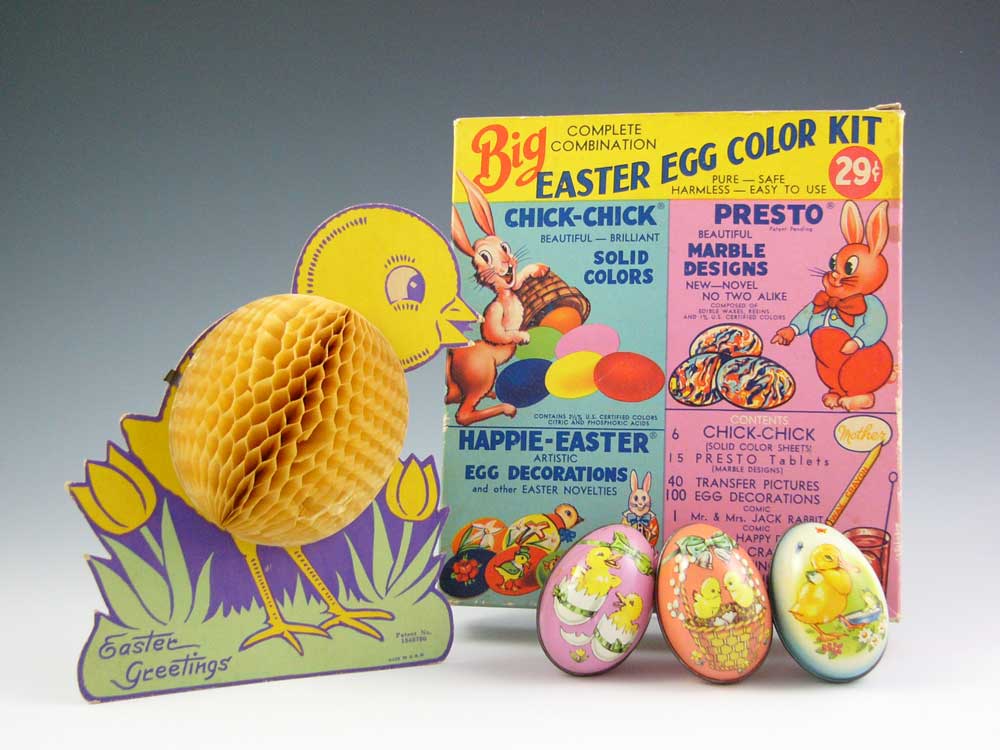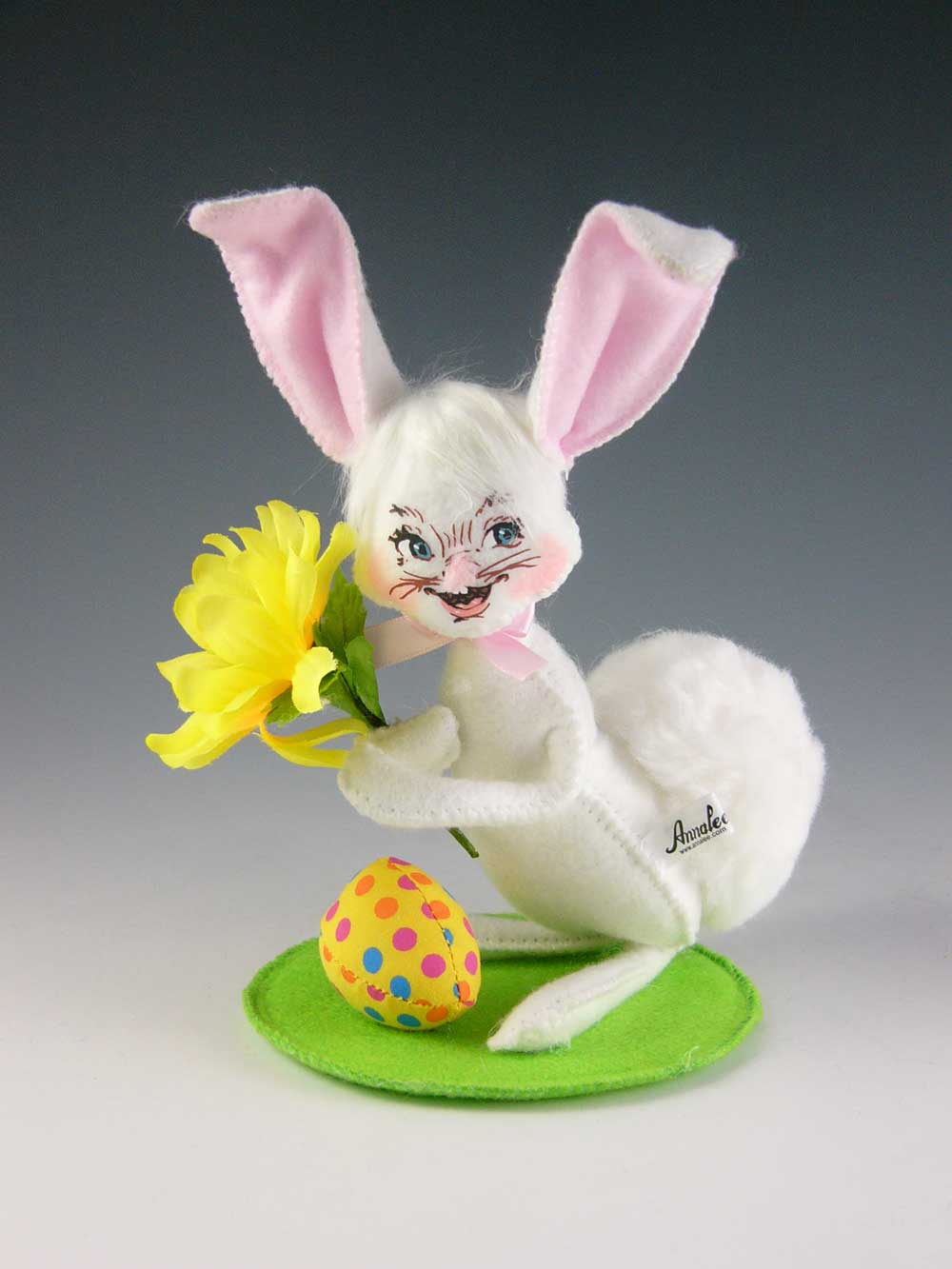March 2024
SMACK DAB IN THE MIDDLE
Hoppin’ down the bunny trail: America’s Easter traditions
by Donald-Brian Johnson
“Here Comes Peter Cottontail,
Hoppin’ down the bunny trail,
Hippity, hoppity, Easter’s on its way!”
(Steve Nelson & Jack Rollins, 1950)
That Gene Autry. First, the cowboy crooner set his sights on Christmas, giving us the lowdown on “Rudolph the Red-Nosed Reindeer” and offering the timely reminder, “Here Comes Santa Claus.” Then, Gene sidled on down the trail a-piece, until he found another holiday worth celebrating. The result: 1950’s bouncy “Here Comes Peter Cottontail.”
Holiday-happy Irving Berlin put all his eggs in one basket, too. “Easter Parade” started off as a song, then became the title of the 1948 Judy Garland/Fred Astaire movie smash. No bunnies, just a tuneful tribute to a beloved Easter Sunday tradition: folks decked out in bandbox finery, strolling down Fifth Avenue (Berlin was a master of re-invention. When an early composition “Smile, and Show Your Dimple” flopped, he put it away until 1933, when “Easter Parade”– the same tune with new lyrics – debuted).
Sprightly songs are one thing. But marshmallow Peeps? Be-ribboned bonnets? Frisky bunnies delivering candy-stuffed baskets? Just how did a major Christian holiday become teamed up with such unlikely springtime bedfellows? Well, blame it on that ancient Anglo-Saxon goddess “Eostre.” When Christianity arrived, it meant easing converts out of long-held pagan practices. Since the spring observance of Christ’s Resurrection roughly coincided with the timing of “Eostre’s” festival, a new celebration supplanted the old. The name remained (sort of); so did “Eostre’s” earthly symbol: the rabbit.
Lent was a period of penitence, “Mardi Gras” the final fling leading into it, Easter the grand celebration of its close. Gradually, Easter’s religious aspects were joined and complemented by secular traditions, celebrating spring as a season of rebirth and renewal. And, from the early 1900s onward, many of those traditions have enjoyed their greatest popularity in America:
Easter eggs
In medieval times, eggs, a symbol of new life, were not eaten during Lent. When Easter rolled around, exchanging Easter eggs seemed egg-zactly right. Back then, the wealthy wrapped theirs in gold leaf; the rest of the world settled for eggs color-stained with flower petals.
The Easter Bunny
In Germany, the “Oschter Haws” (“Easter Hare”) hides nests of brightly colored eggs. German immigrants brought the tradition to America in the 1700s (Incidentally, says the National Confectioner’s Association, 76% of Americans think chocolate bunnies should be eaten “ears first!”).
Easter cards
To boost sales, a printer in Victorian England spruced up generic spring greeting cards with bunnies. Today, while not leading the Easter parade, Easter cards follow Christmas, Valentines Day, and Mother’s Day cards in popularity.

Honeycomb chick table decoration
Honeycomb chick table decoration, egg dye kit, and metal eggs with Easter decals. New/old stock from Campbell’s Department Store, Bridgewater Iowa, late 1940s. Chick and dye kit, $15-20 each; eggs $5-7 each. (Image courtesy of the author and photo associate Hank Kuhlmann)

Flexible fabric Easter Bunny
All set for his big day: flexible fabric Easter Bunny by Annalee. $20-25. (Image courtesy of the author and photo associate Hank Kuhlmann)
Easter lilies
Early Christians viewed the lily as a symbol of purity. The white trumpet lily made its U.S. debut in the early 1900s, by way of Bermuda.
Peeps
Every Easter, we choke down more than 700 million of these marshmallow confections. Yellow chicks are the most popular, although there are Peep bunnies and eggs, too. It takes six minutes to make a Peep. In 1953, it took 27 hours.
Jellybeans
16 billion are gobbled up each Easter Sunday (and swept up for weeks afterward). Boston candy maker William Schrafft came up with the concept during the Civil War; customers were encouraged to send these nearly indestructible treats to soldiers.
Easter bonnets
It’s long been considered “good luck” to wear something new at Easter; 18th-century author “Poor Robin” advised, “At Easter, let your clothes be new, or else be sure you will it rue.” Even in the direst days of the Depression, a new Easter bonnet, (or, at least a refurbished old one), remained within the range of most pocketbooks. As the inimitable Irving Berlin put it:
“In your Easter bonnet, with all the frills upon it,
You’ll be the grandest lady
in the Easter Parade.”
(Unless, of course, you’re Fred Astaire. In that case, a top hat will do, and you’re the “grandest fella!”)
Happy Easter!
Donald-Brian Johnson is the co-author of numerous Schiffer books on design and collectibles, including “Postwar Pop,” a collection of his columns. Please address inquiries to: donaldbrian@msn.com

